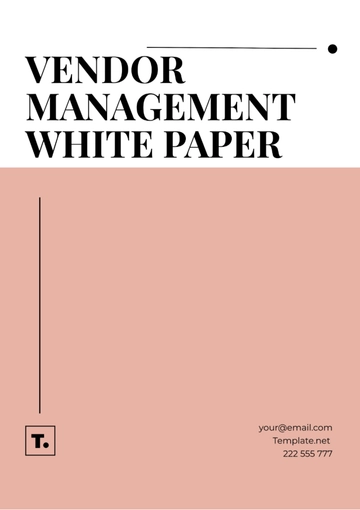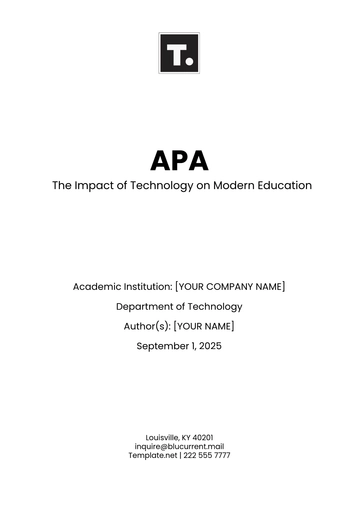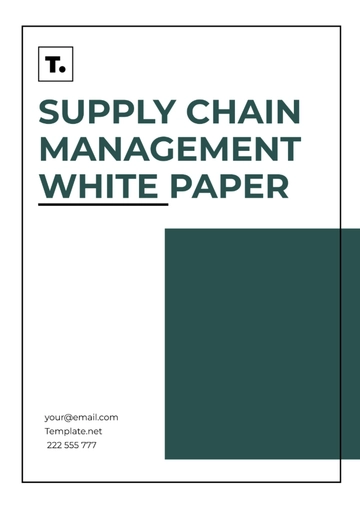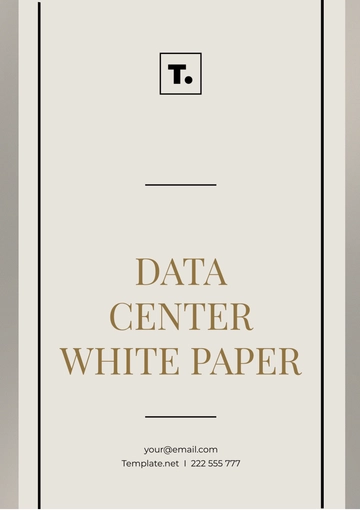Free B2B Content Marketing White Paper

Effective Strategies for B2B Content Marketing
Written by [Your Name]
Published by [Your Company Name]
Email: [your company email]
Website: [your company website]

I. Executive Summary
A. Key Insights
In today's digital landscape, B2B content marketing plays a pivotal role in driving brand awareness, generating leads, and nurturing customer relationships. This white paper explores key insights and strategies for successful B2B content marketing, providing valuable guidance for businesses looking to enhance their marketing efforts and achieve measurable results.
II. Introduction
A. Purpose of the White Paper
The purpose of this white paper is to provide a comprehensive overview of B2B content marketing and its significance in the modern business environment. By understanding the fundamentals of B2B content marketing and implementing effective strategies, businesses can position themselves for success in a competitive marketplace.
III. Understanding B2B Content Marketing
A. What is B2B Content Marketing?
B2B content marketing involves the creation and distribution of valuable, relevant content to attract and engage a target audience of businesses or decision-makers. Unlike traditional advertising, B2B content marketing focuses on providing informative and educational content that addresses the needs and challenges of potential customers.
B. Benefits of B2B Content Marketing
Increased brand visibility
Improved lead generation
Enhanced brand authority
Higher customer engagement
C. Target Audience Identification
Identifying and understanding the target audience is essential for effective B2B content marketing. Businesses should conduct thorough market research to identify their ideal customer profiles, including demographic information, pain points, challenges, and preferences. By tailoring content to address the specific needs and interests of their target audience, businesses can create more impactful and relevant marketing campaigns.
IV. Creating Compelling B2B Content
A. Content Strategy Development
Developing a comprehensive content strategy is key to successful B2B content marketing. Businesses should define their goals, target audience, messaging, and distribution channels to create a cohesive and effective content marketing plan. By aligning content with business objectives and customer needs, businesses can maximize the impact of their marketing efforts and drive measurable results.
B. Content Formats and Channels
B2B content marketing encompasses a wide range of formats and channels, including blog posts, white papers, case studies, videos, webinars, social media, and email marketing. Businesses should diversify their content strategy to reach their target audience across multiple platforms and engage them through various types of content that resonate with their preferences and interests.
C. Tailoring Content to Buyer Personas
Creating personalized content tailored to specific buyer personas is essential for effective B2B content marketing. Businesses should develop detailed buyer personas representing their ideal customers, including demographic information, pain points, motivations, and purchasing behaviors. By crafting content that addresses the unique needs and challenges of each buyer persona, businesses can deliver more relevant and compelling messages that resonate with their target audience.
V. Content Creation Process
A. Ideation and Research
The content creation process begins with ideation and research, where businesses brainstorm ideas and gather insights to inform their content strategy. This involves identifying relevant topics, conducting keyword research, analyzing competitor content, and understanding industry trends and customer preferences. By conducting thorough research, businesses can ensure that their content addresses the needs and interests of their target audience and stands out in a crowded marketplace.
B. Content Creation and Production
Once the content strategy is defined, businesses can proceed with content creation and production. This involves writing, designing, and producing high-quality content that aligns with the established objectives and messaging. Businesses should focus on creating engaging, informative, and visually appealing content that captures the attention of their target audience and delivers value. Whether it's blog posts, infographics, videos, or downloadable resources, businesses should prioritize quality and relevance in their content creation efforts.
C. Content Optimization for SEO
Optimizing content for search engines is essential for maximizing its visibility and reach. Businesses should incorporate relevant keywords, optimize meta tags and descriptions, and structure content for readability and SEO. Additionally, businesses should focus on creating valuable, authoritative content that attracts backlinks and enhances their search engine rankings. By following SEO best practices, businesses can improve their content's discoverability and drive organic traffic to their website.
VI. Distributing B2B Content
A. Content Distribution Channels
Once content is created, businesses must distribute it effectively to reach their target audience. Content distribution channels may include owned channels such as websites, blogs, and social media profiles, as well as earned and paid channels such as guest blogging, influencer partnerships, and paid advertising. Businesses should leverage a mix of channels to maximize their content's reach and engagement and adapt their distribution strategy based on their audience's preferences and behavior.
B. Leveraging Social Media Platforms
Social media platforms offer powerful opportunities for B2B content distribution and engagement. Businesses should leverage social media channels such as LinkedIn, Twitter, Facebook, and Instagram to share their content, engage with their audience, and foster conversations around their brand and industry. By creating compelling, shareable content and actively participating in relevant discussions and communities, businesses can amplify their reach and establish meaningful connections with prospects and customers.
C. Email Marketing Strategies
Email marketing remains a highly effective channel for B2B content distribution and lead nurturing. Businesses can use email marketing to deliver personalized content directly to their subscribers' inboxes, segmenting their audience based on interests, preferences, and behaviors. By sending targeted, relevant content to the right audience at the right time, businesses can nurture leads, drive conversions, and build long-term relationships with their subscribers.
VII. Measuring Content Marketing Success
A. Key Performance Indicators (KPIs)
Measuring the success of B2B content marketing efforts requires defining and tracking key performance indicators (KPIs) that align with business objectives. Common KPIs for B2B content marketing include website traffic, engagement metrics (such as likes, shares, and comments), lead generation (such as form submissions and email sign-ups), conversion rates, and customer retention. By regularly monitoring and analyzing these KPIs, businesses can assess the effectiveness of their content marketing initiatives, identify areas for improvement, and optimize their strategies for maximum impact.
B. Analytics and Tracking Tools
To measure content marketing success accurately, businesses should leverage analytics and tracking tools to gather data and insights about their content performance. Tools such as Google Analytics, social media analytics platforms, and marketing automation software provide valuable data on website traffic, engagement, conversions, and ROI. By leveraging these tools to track content performance across various channels and touchpoints, businesses can gain actionable insights into their audience's behavior, preferences, and interactions with their content.
C. Iterative Improvement Strategies
Continuous improvement is essential for optimizing content marketing strategies and driving sustainable results. Businesses should regularly review their content performance data, analyze trends and patterns, and identify opportunities for optimization and refinement. This may involve A/B testing different content formats, distribution channels, and messaging strategies, experimenting with new ideas and tactics, and adapting strategies based on performance insights. By adopting an iterative approach to content marketing, businesses can refine their strategies over time, enhance their effectiveness, and achieve greater success in reaching and engaging their target audience.
VIII. Contacts:
You can contact us through:
[your name]
[your email]
[your company name]
[your company email]
[your company website]
- 100% Customizable, free editor
- Access 1 Million+ Templates, photo’s & graphics
- Download or share as a template
- Click and replace photos, graphics, text, backgrounds
- Resize, crop, AI write & more
- Access advanced editor
Introducing Template.net's B2B Content Marketing White Paper Template—a game-changer for businesses seeking to elevate their content strategy. Crafted with precision, it's more than a template; it's a roadmap to success. Fully editable and customizable, it seamlessly integrates AI Editable Tool for effortless customization. Drive engagement, capture leads, and dominate your market with this essential resource.





























